Red cicatrices, green-eyed monsters, yellow stockings, and blue-eyed hags are all to be found within.
Over the course of twenty six years starting in 1950, The Folio Society produced a 37-volume collection of William Shakespeare‘s dramatic works. Notable for their vibrant and varied coloured bindings, I call them The Rainbow Shakespeare.
These editions have a varied publication history. From 1950 until 1958, the first plays were issued with dust jackets (The Tragedy of Romeo and Juliet, Macbeth, The Tragedy of Anthony and Cleopatra, As You Like It, Hamlet, Othello, King Lear, A Midsummer Night’s Dream, and King Richard II were all published in this way). Around the middle of this period, the Folio Society began regularly issuing books with slipcases and, from 1959, the Shakespeare volumes followed suit, adopting the mottled grey slipcases that would follow the series to completion. Those volumes that were earlier issued with a dustjacket were reprinted and offered in slipcases of their own, making for a uniform set. Each volume has its own case, except the three parts of King Henry VI that share a single slipcase.
Though the packaging changed, the binding design remained constant throughout the series’ entire run. That design consisted of cloth boards in various of colours stamped with alternating black and gold quills on the cover. The spine bears the title of the play blocked in gold, along with “FS” and “WS” motifs. Roughly speaking, the bindings are colour coded, with histories in blue, comedies in greenish hues, and tragedies in red-browns. This colour scheme broadly matches the one that would later be used for The Letterpress Shakespeare. The varied binding colours mean that these volumes can be arranged on the shelf to form a pleasing colour spectrum. The volumes are slim octavo sized, making them comfortable to hold and read. The top edge of the text block is stained—usually in the same colour as the book cloth, although there are some exceptions. The binding is sewn with a striped headband.
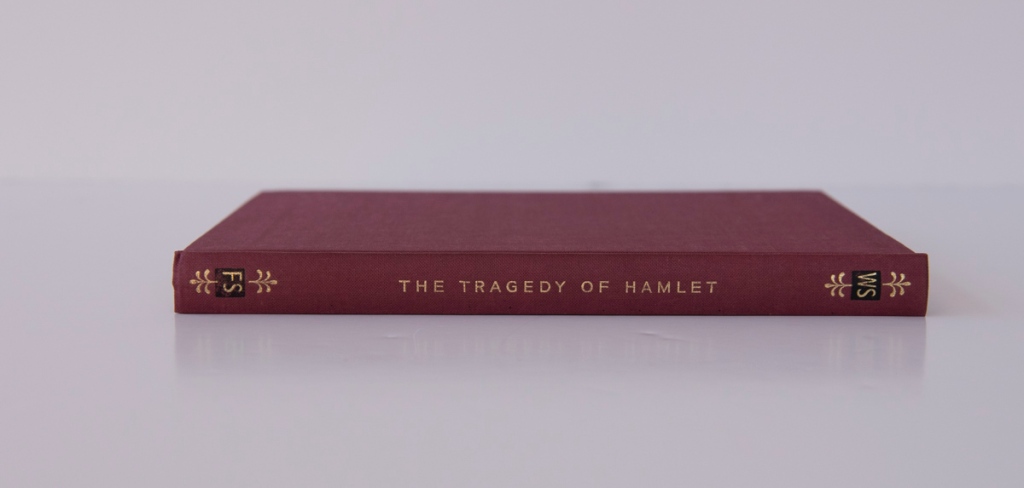
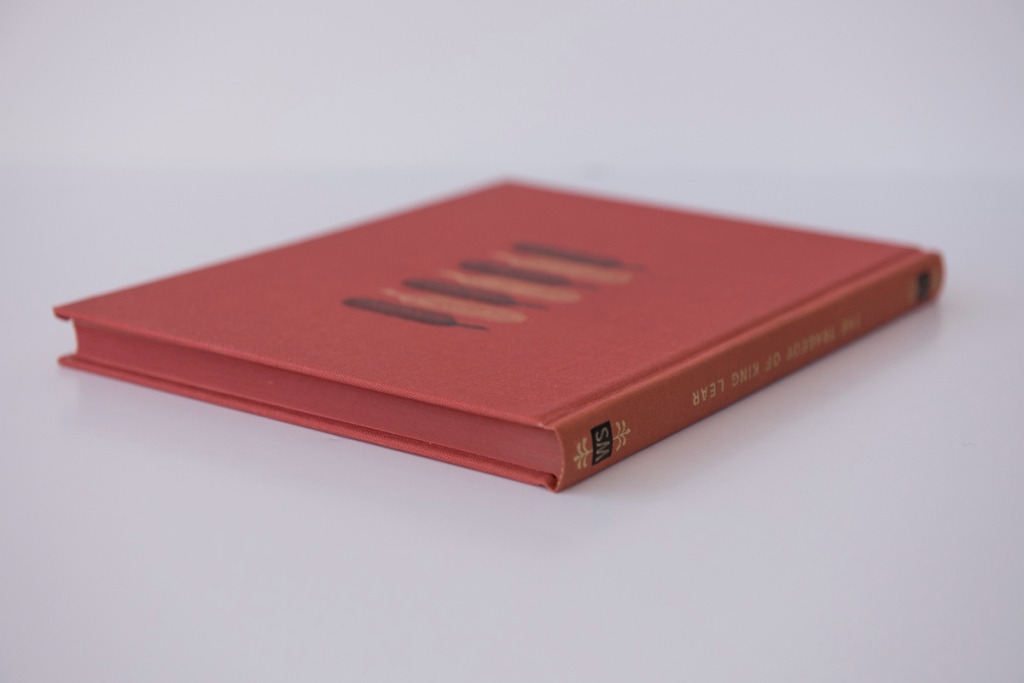
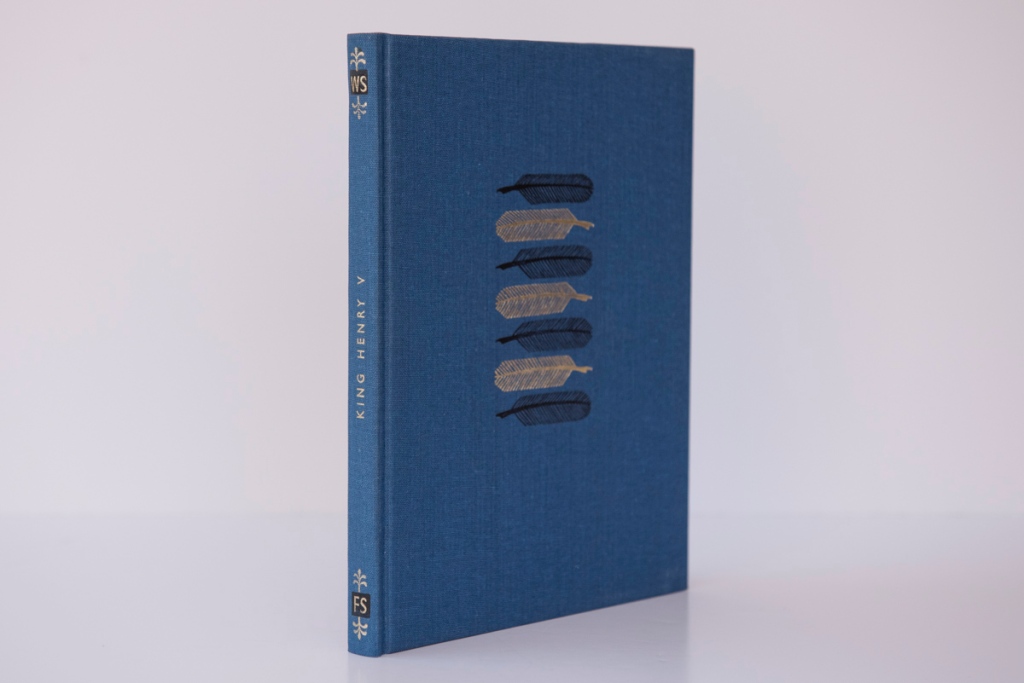
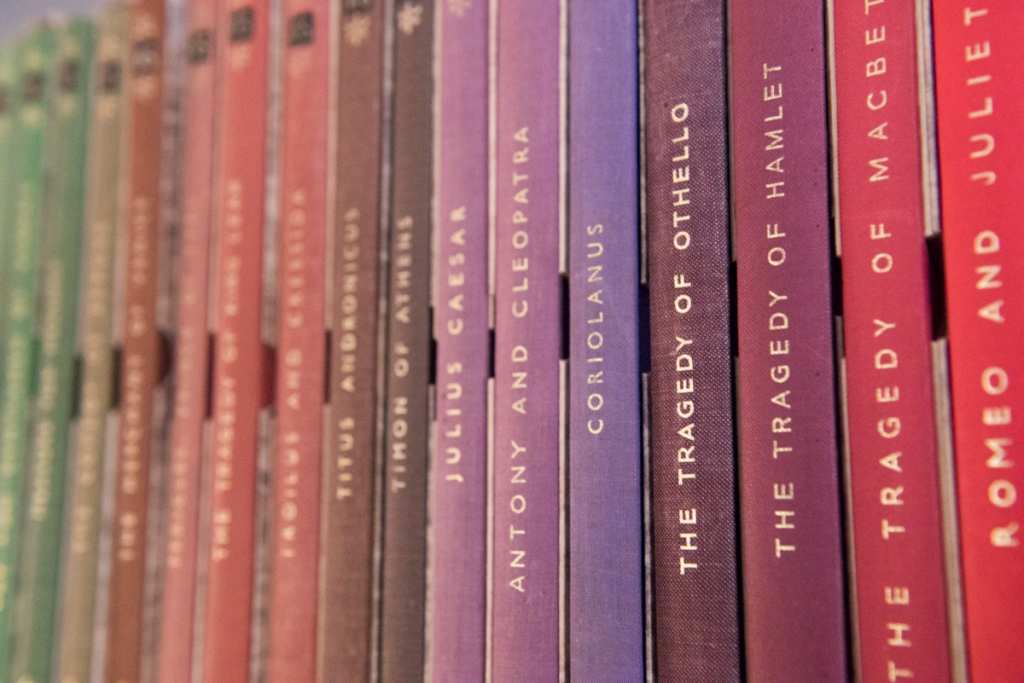
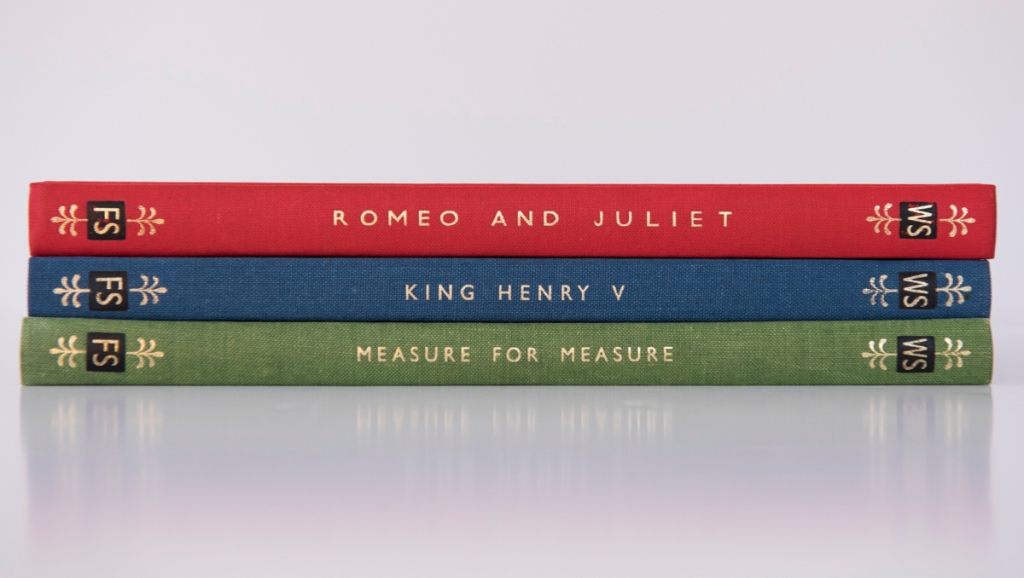
It’s worth mentioning that in 1976 The Folio Society reissued the entire collection in a collected 37-volume uniform set packaged in six brown slipcases. Each volume in this set was uniformly bound in white vegetable parchment paper, although the internal content is identical to the rainbow editions. You can read more about this set over at The Folio Society Devotees forum.
Although published in series, there is some variation in the internal design of these books. For instance, various typefaces have been employed, including Plantin, Bell, walbaum, Baskerville and Garamond (usually in 12pt or 11pt). Some books include the Folio Society colophon on the title page; others do not. The paper, too, shows a little variation, although it is uniformly of a good weight and opacity. One design factor that does remain constant is the two-colour printing, with speakers’ names, act headers, and marginal scene titles all coloured to match the binding. The books were printed letterpress and therefore have excellent text clarity.
The series uses the text of The New Temple Shakespeare, which adopts modernised spelling. The plays have introductions, including some penned by titans of the stage, from Lawrence Olivier to Richard Burton. In 1977 these introductions were brought together in a single volume edited by Charles Ede. There are no scholarly notes, but the volumes each end with a glossary for each scene.
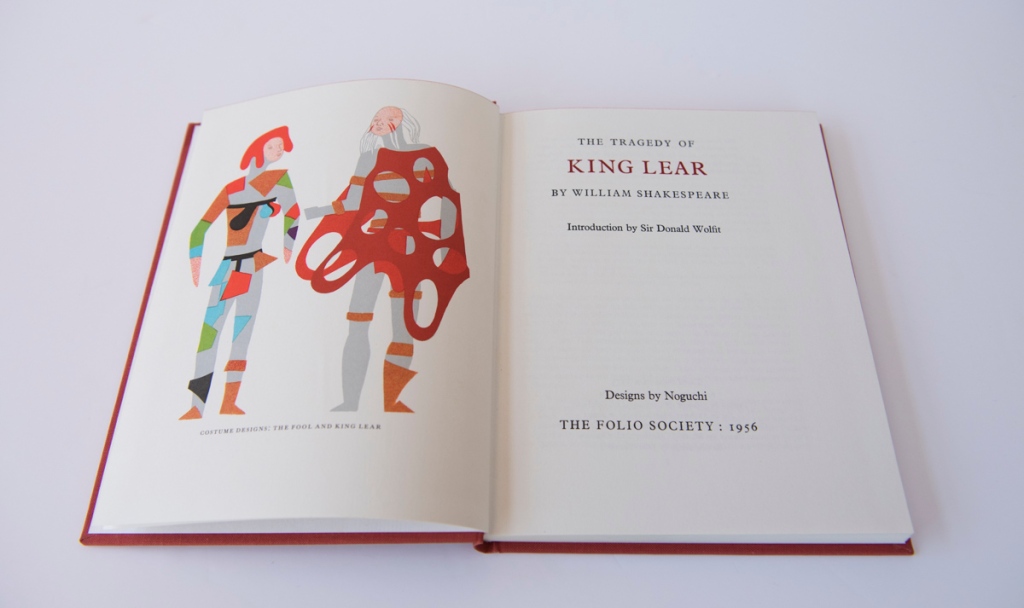
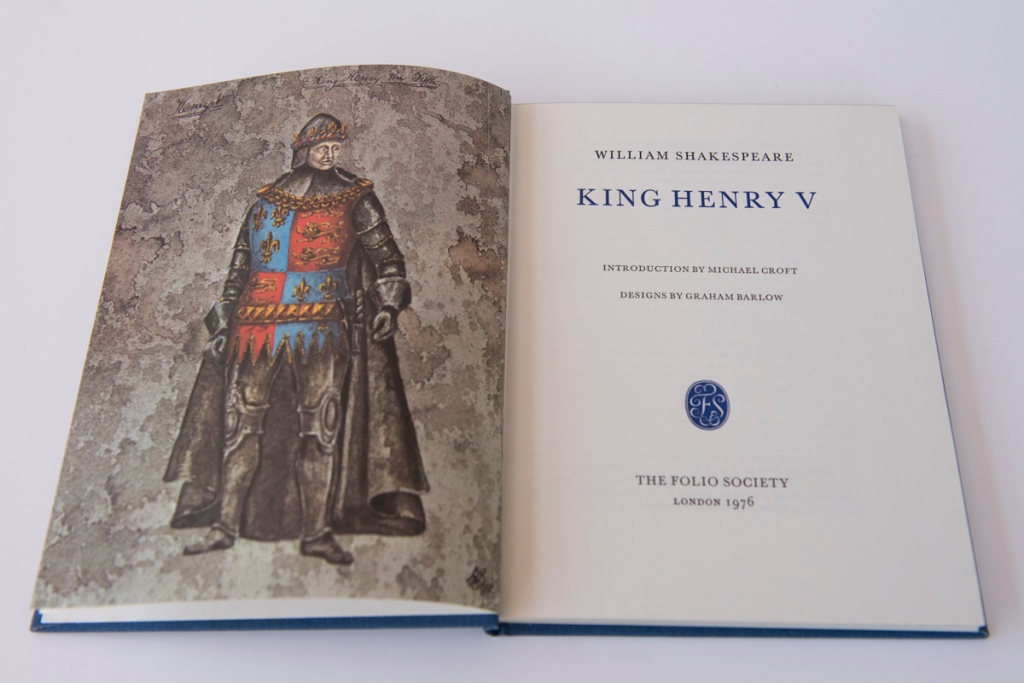
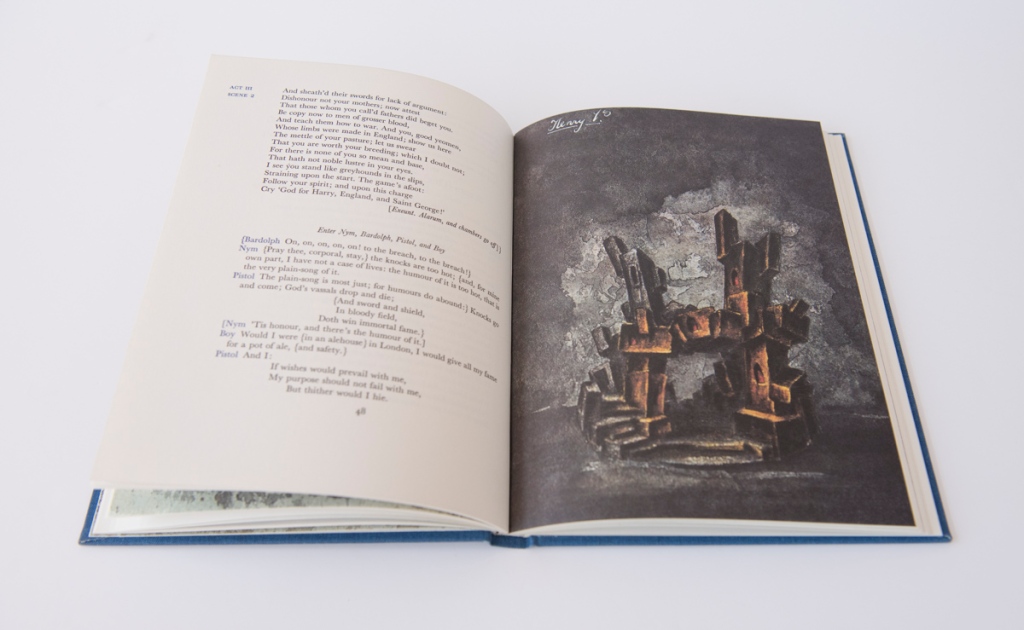
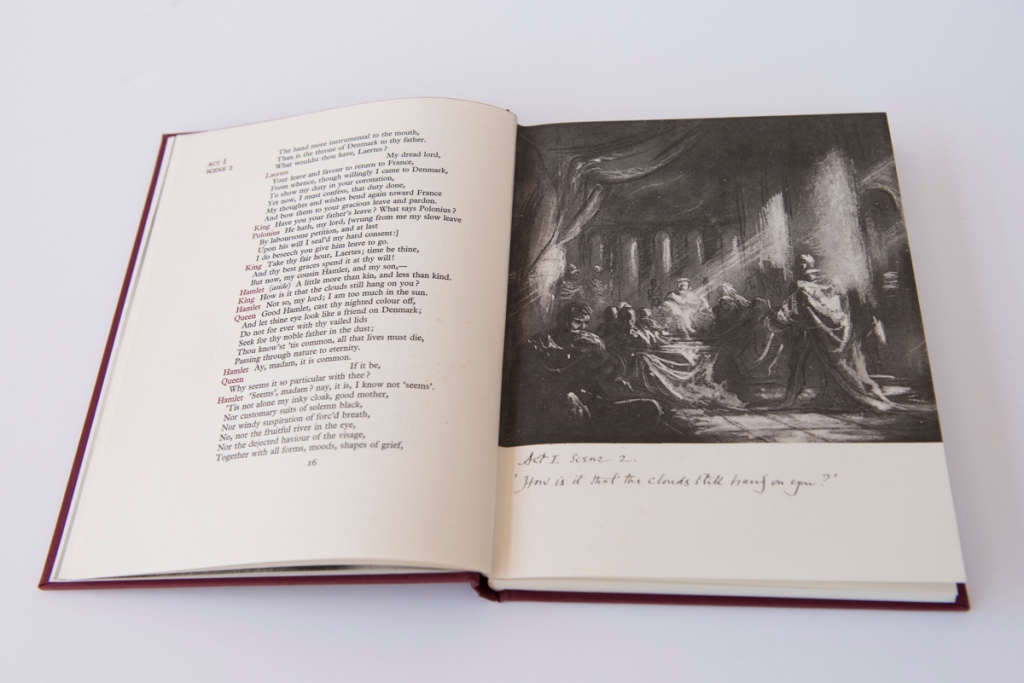
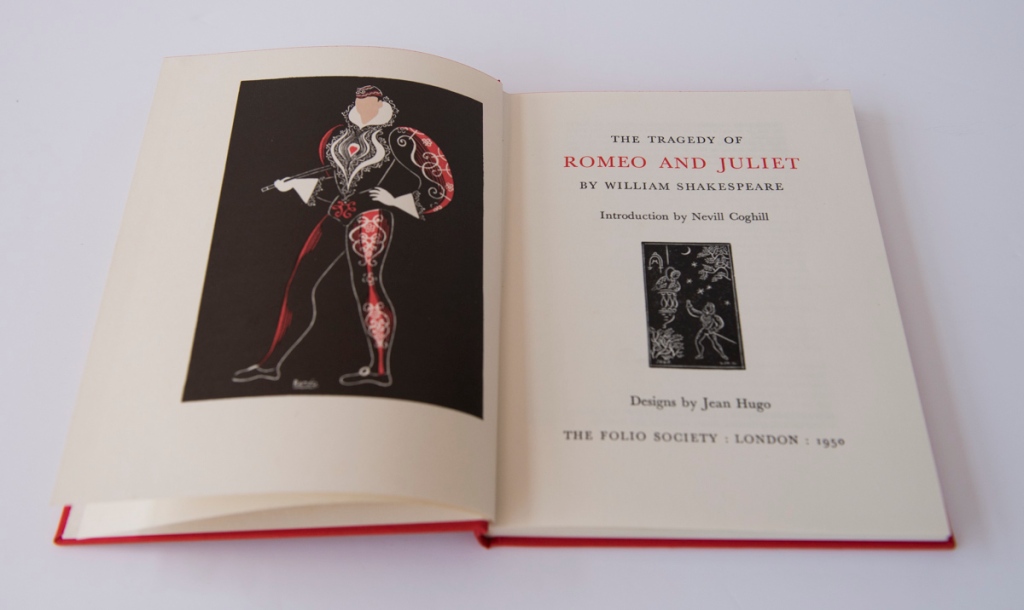
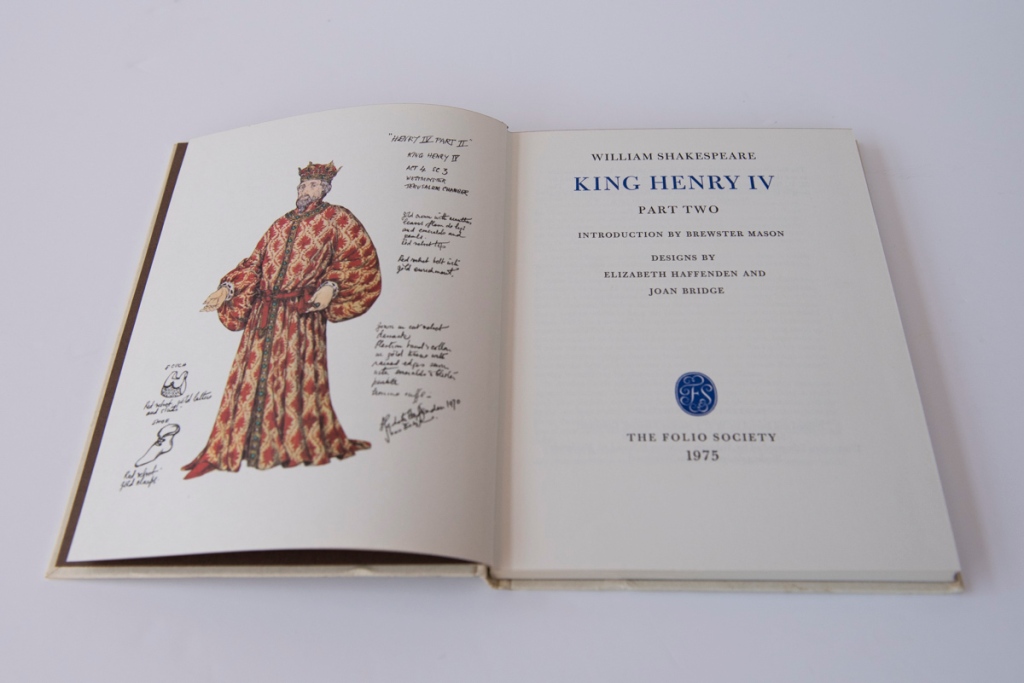
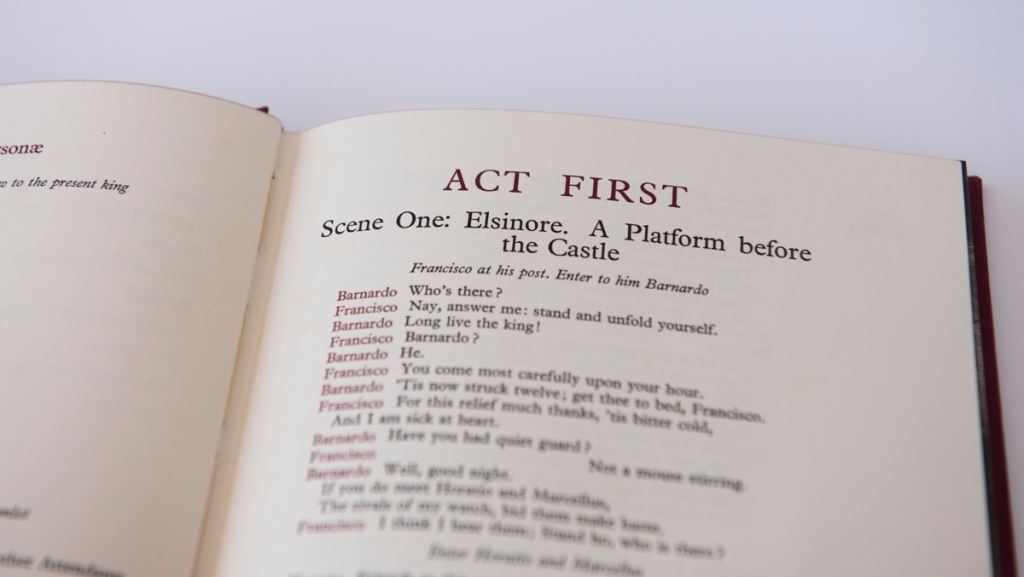
The books are illustrated, primarily with costume (and occasionally set) designs from productions of the plays in question. A wide number of artists and styles are represented. Many books have simple sketches of fairly literal costume interpretations, but some are more creative. My personal favourites are Noguchi’s graphic designs for King Lear (1956), which defy the play’s sombre tone with vibrant and playful images. Other highlights might include Dali’s surreal images in As You Like It (1953), Timothy O’Brien’s quirky illustrations for The Merry Wives of Windsor (1974), and Roger Furse’s rough but atmospheric sketches for Hamlet (1954).
I have made no secret of my love for the Letterpress Shakespeare, but this earlier set is one of the best kept secrets of the Folio Society’s archive. The secondary market is awash with copies, with individual plays typically selling for less than £10 and the full 37-volume set often fetching less than the cost of a single letterpress volume. If you’re in the market for some letterpress-printed Shakespeare but don’t have the budget for its big brother, this rainbow set could be an excellent bet. ■
Where to buy
You can search for Folio Society Shakespeare on eBay US*, eBay UK*, AbeBooks US*, or AbeBooks UK*.
* denotes an affiliate link.

Hi, thanks for the comment. This list has all books published by The Folio Society and if you search for Shakespeare on the page you should quickly find the information you are looking for. Hope that helps!
https://wiki.librarything.com/index.php/Groups:BOOKS_PUBLISHED_BY_THE_FOLIO_SOCIETY
LikeLike
Hi there
Thank you for putting this note together on the ‘rainbow Shakespeare’ set. really interesting. I have a number of these and would like to add to/complete it. You don’t happen to have a list of the titles and Folio first publication dates, do you?
Many thanks
LikeLike